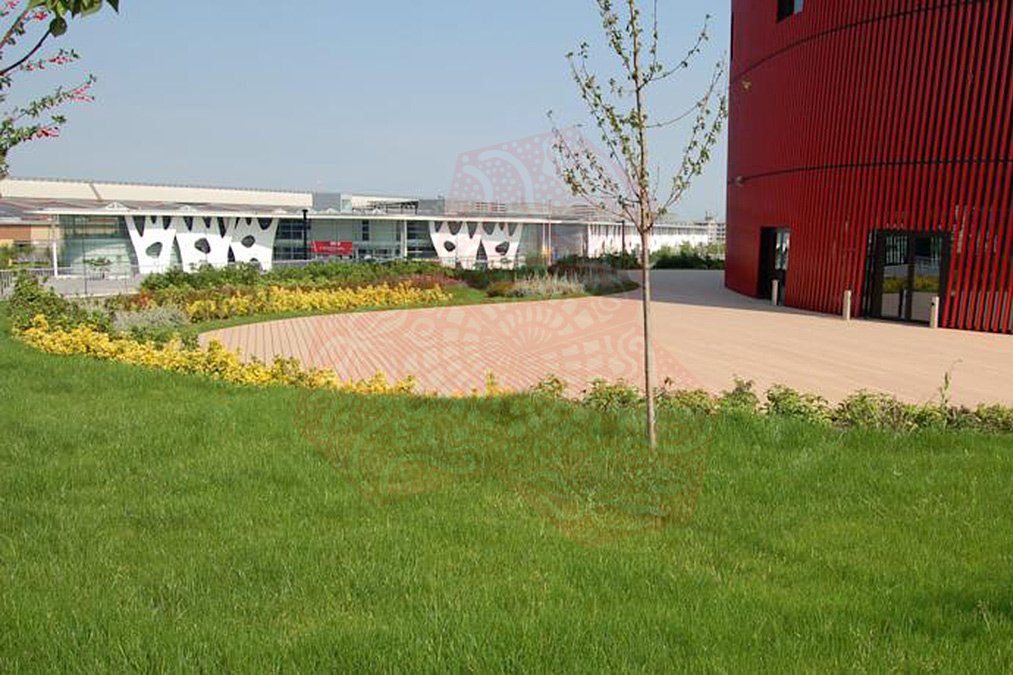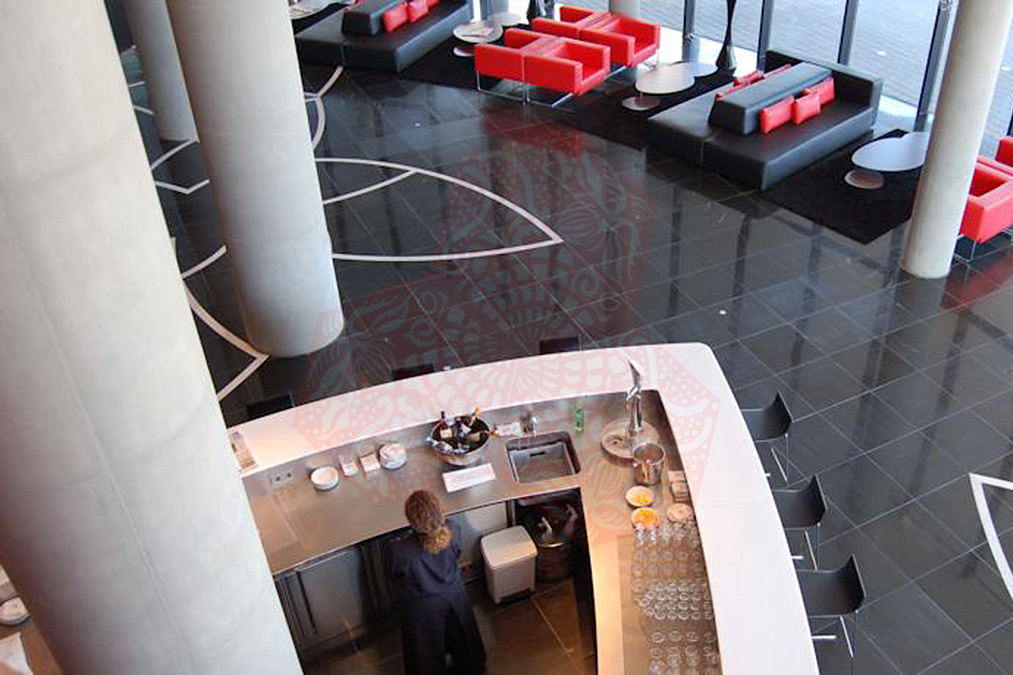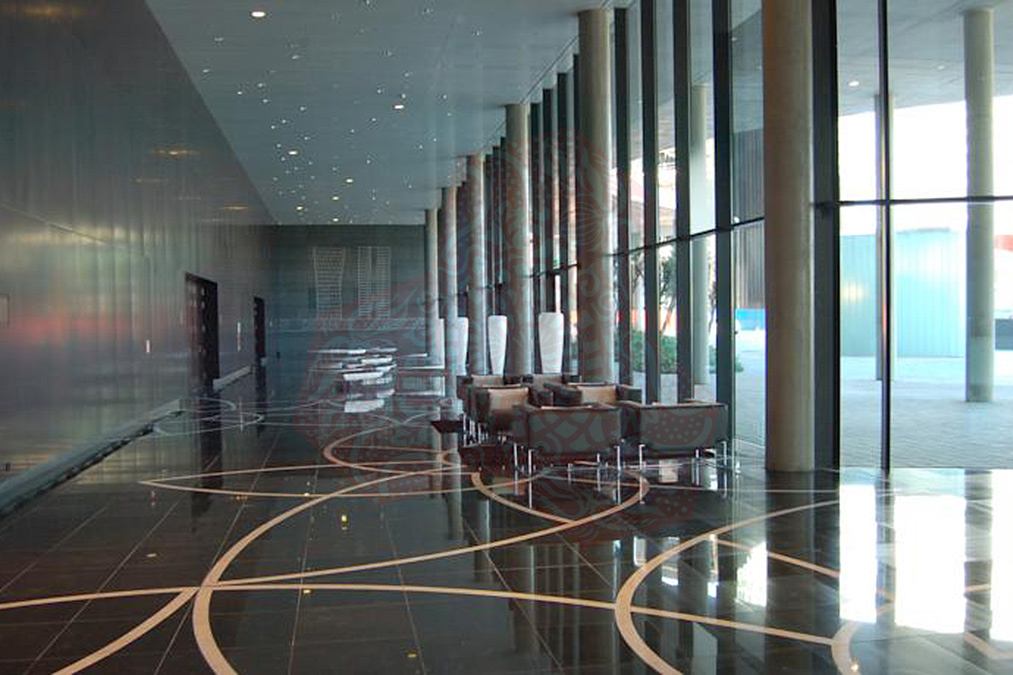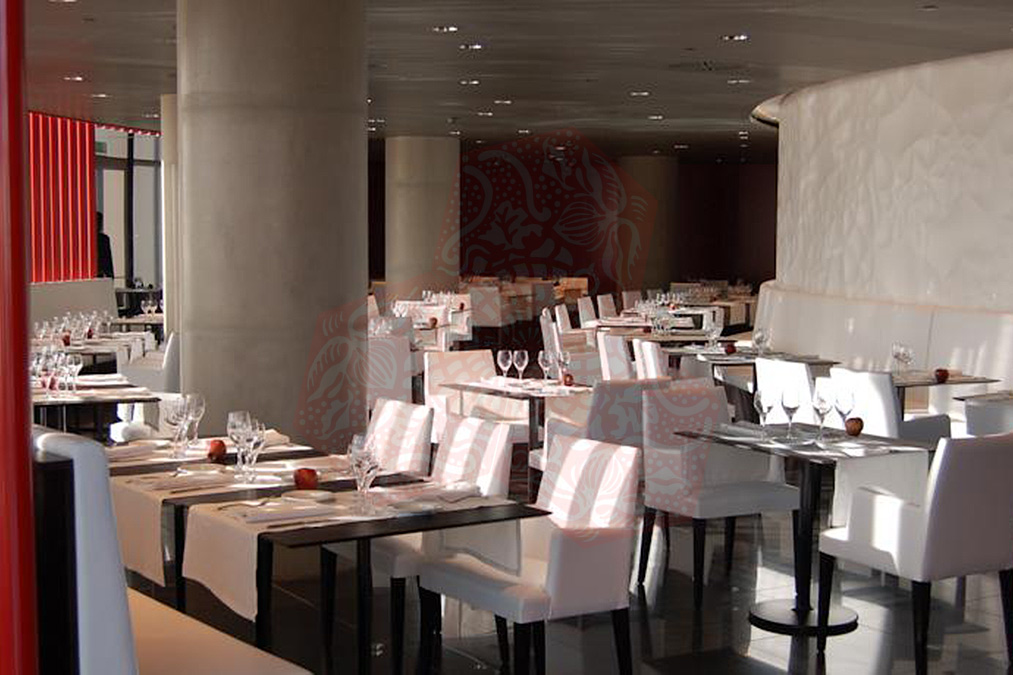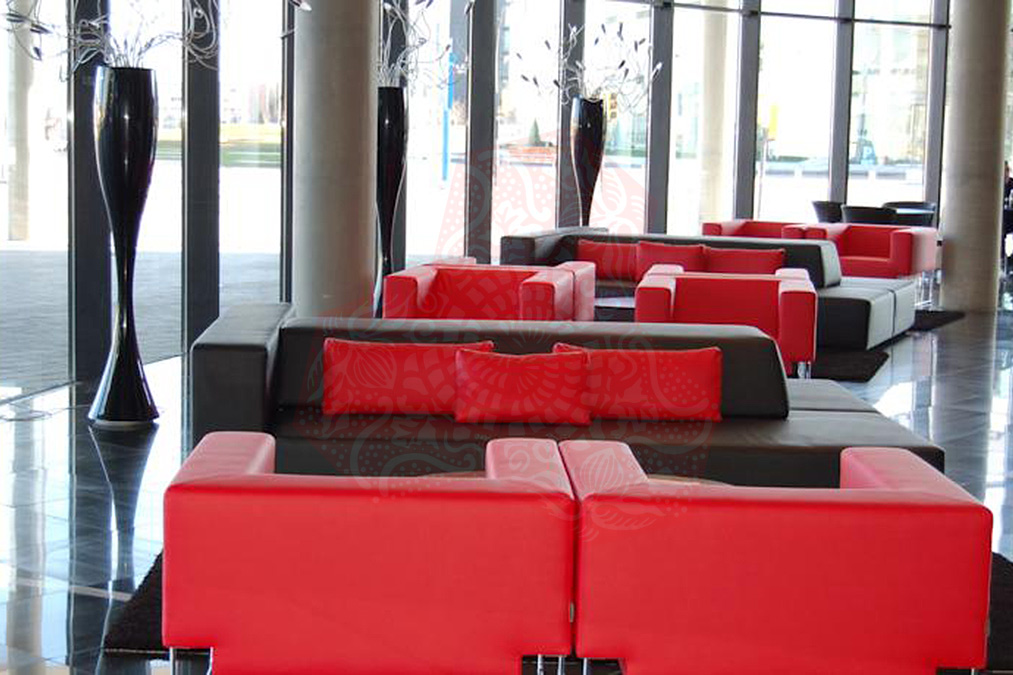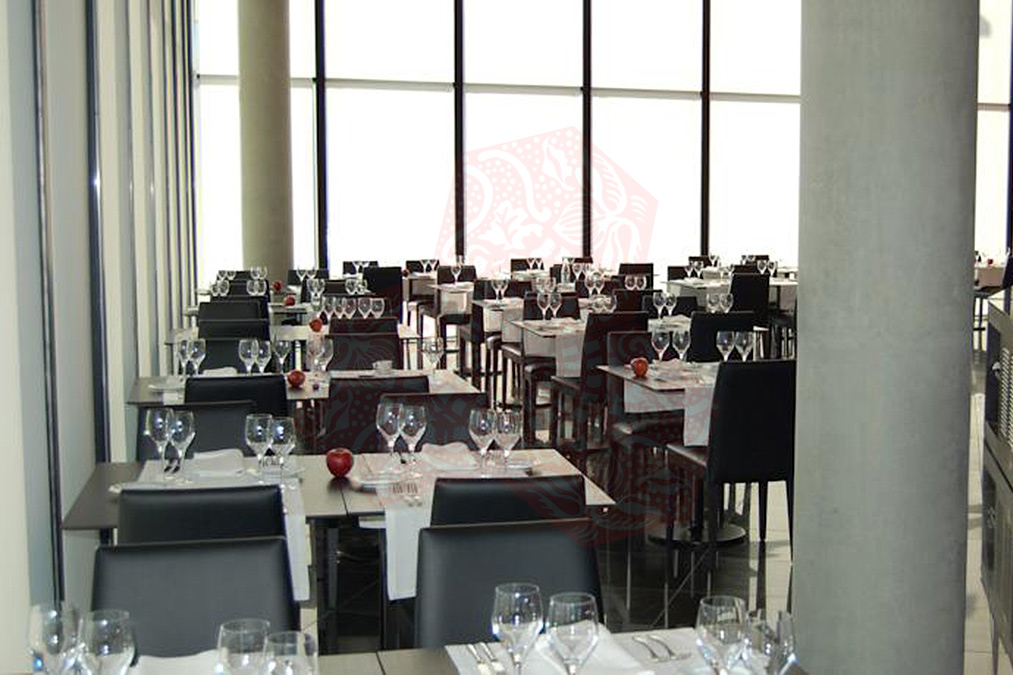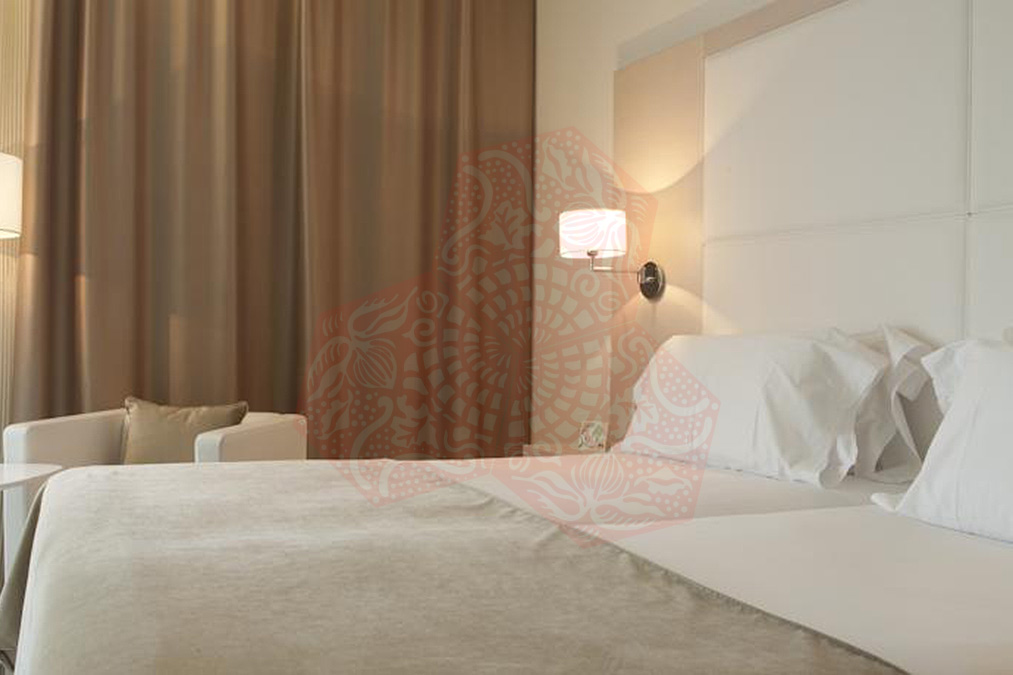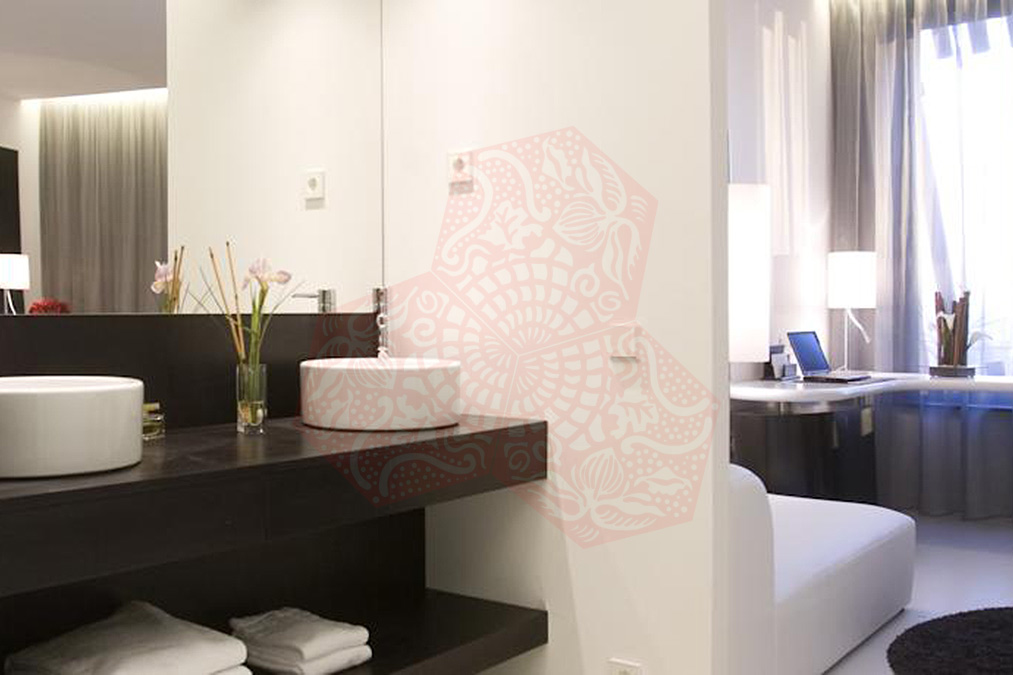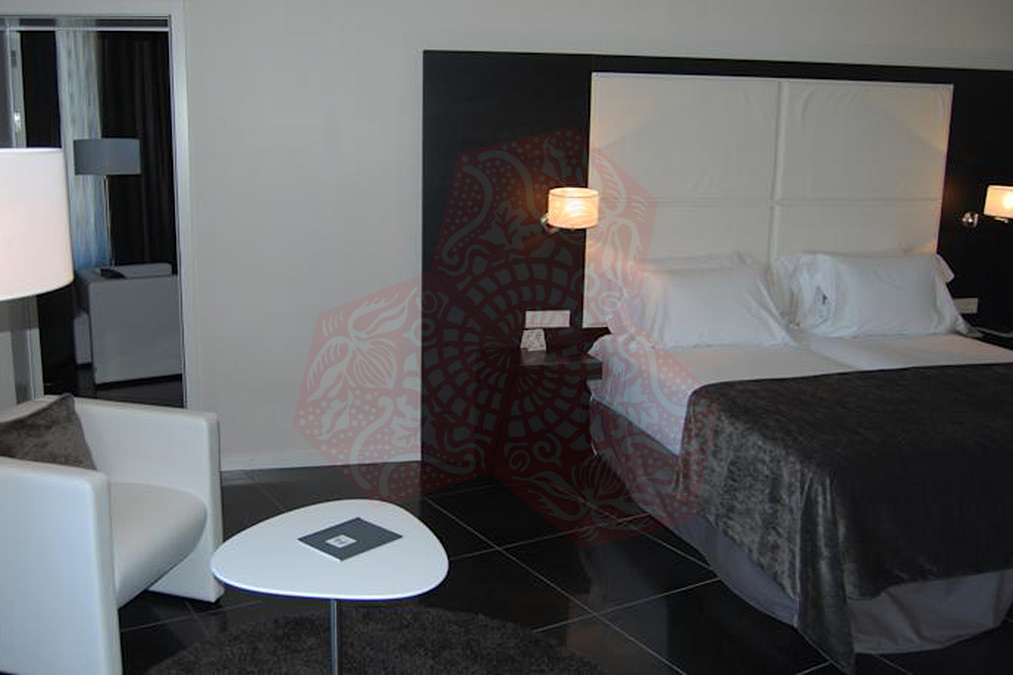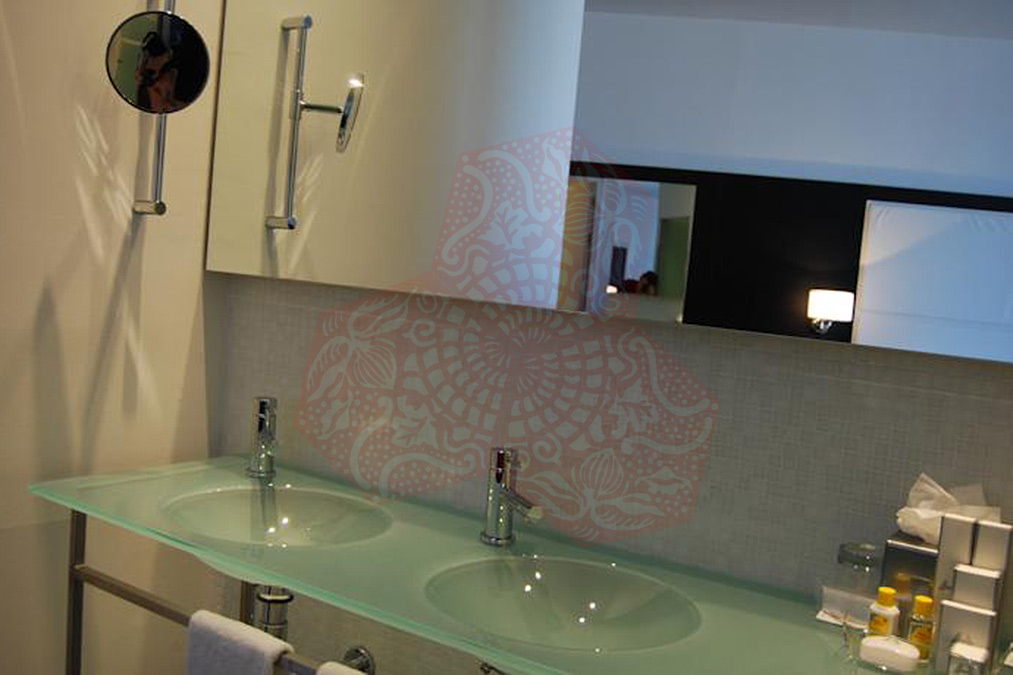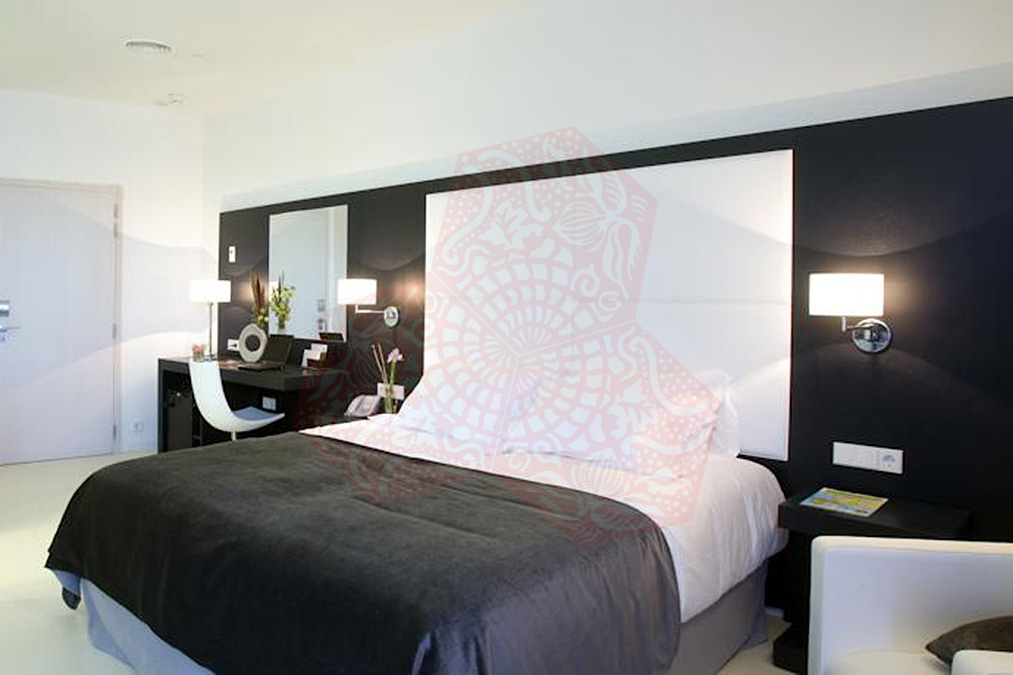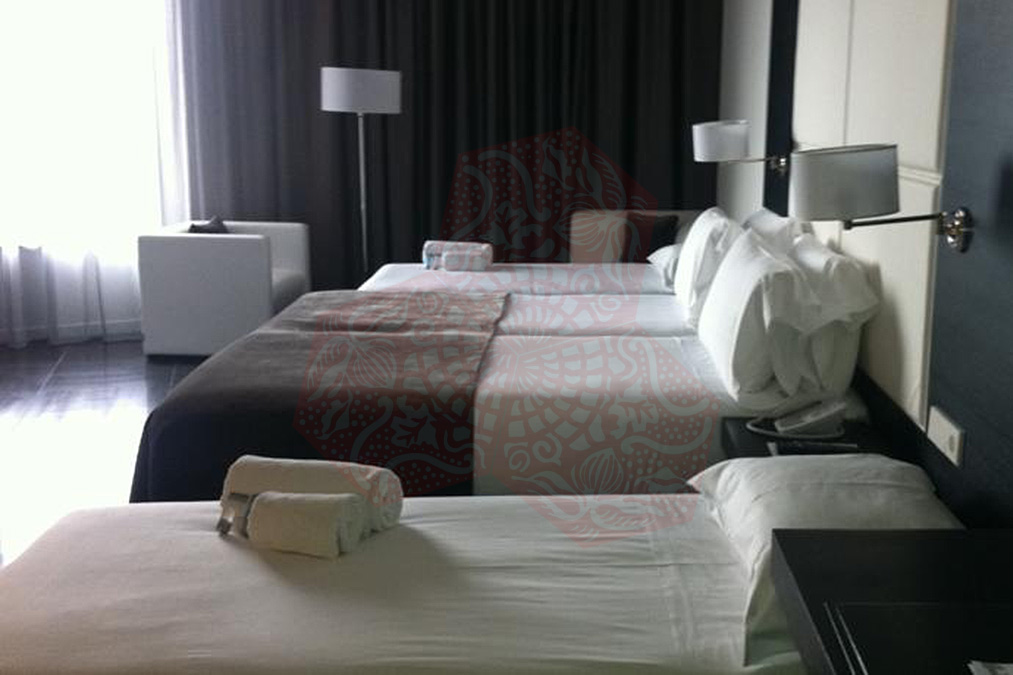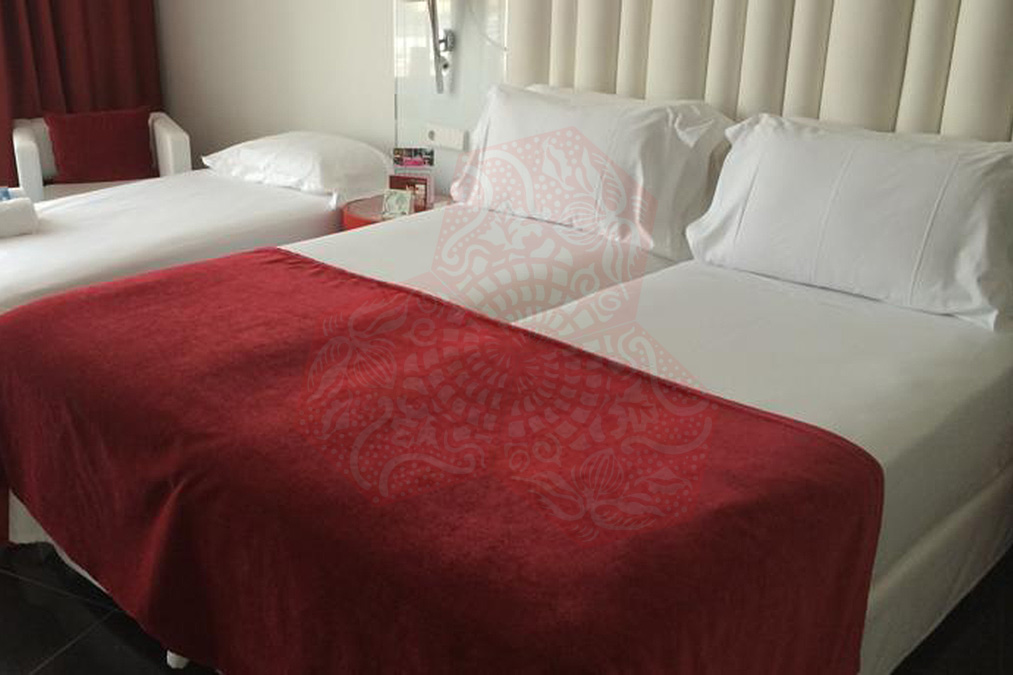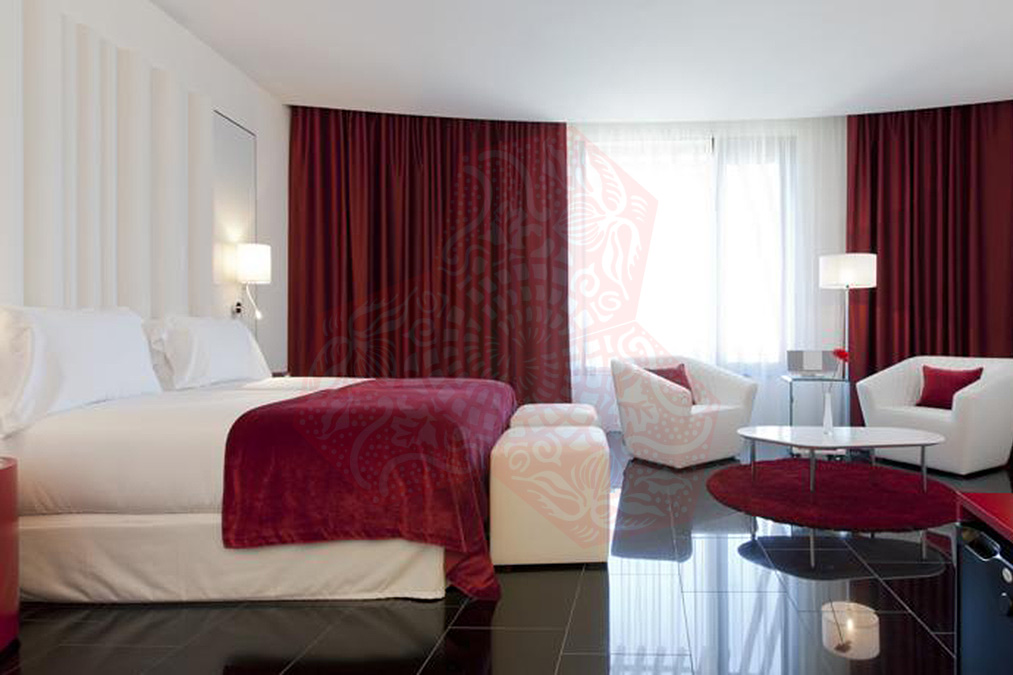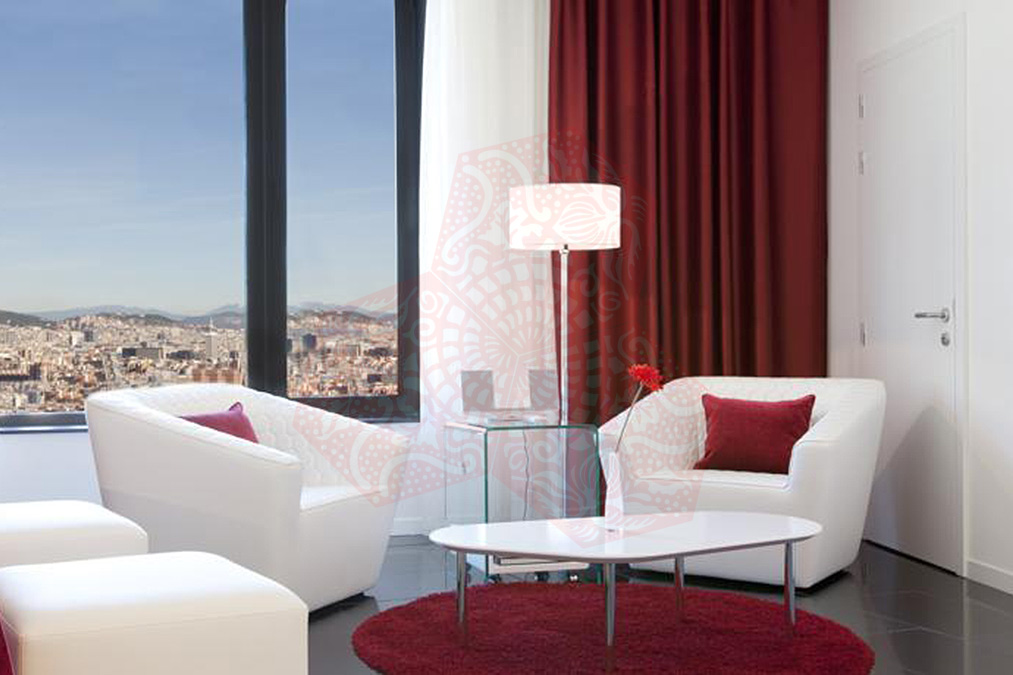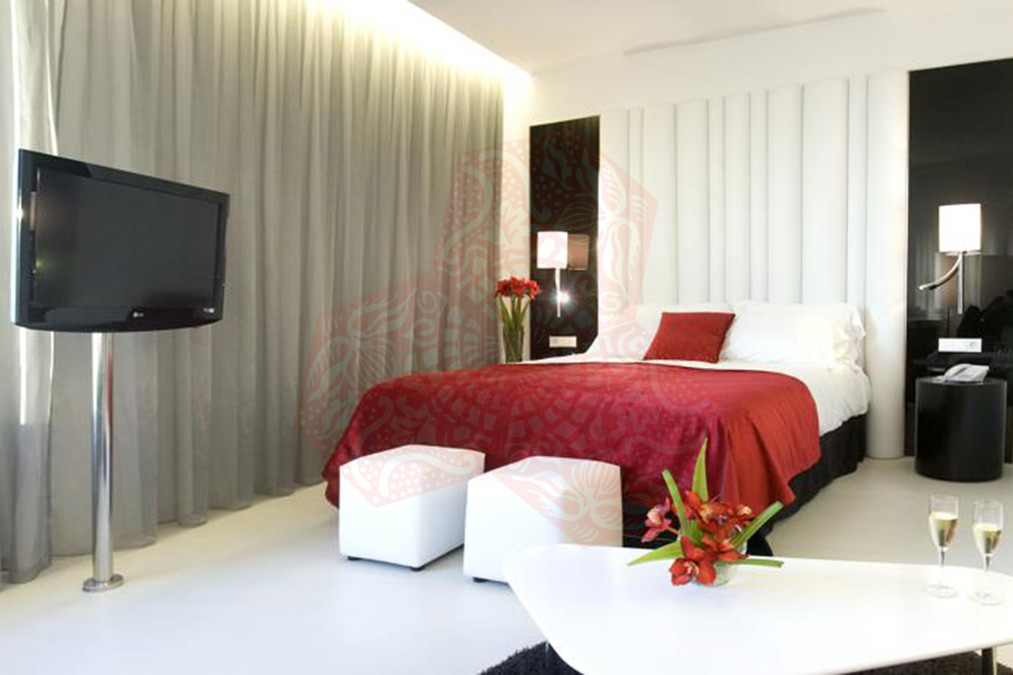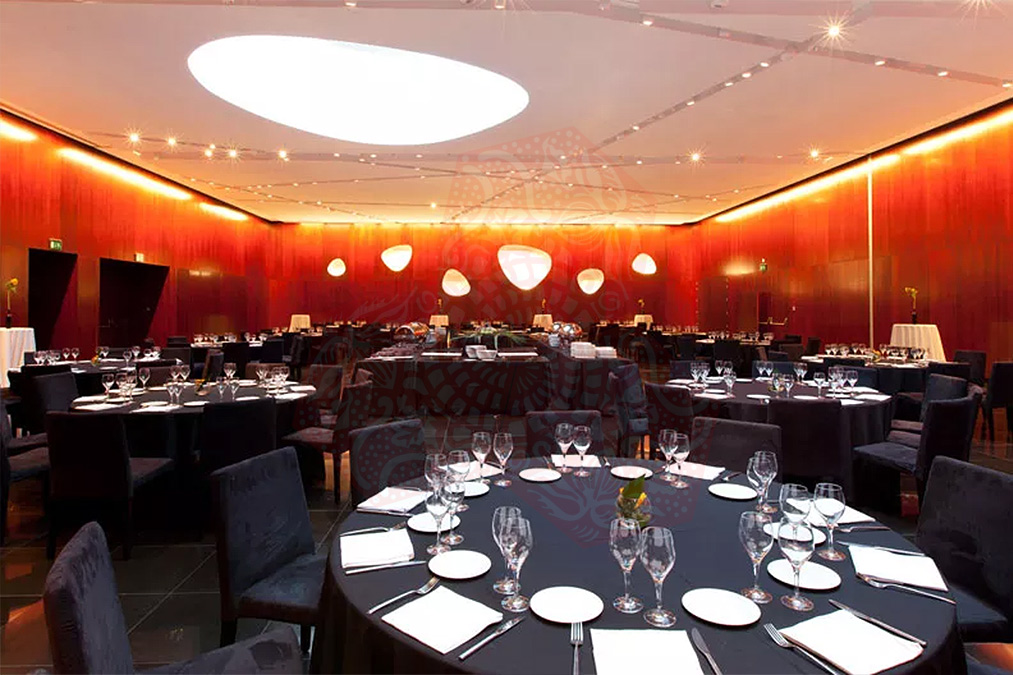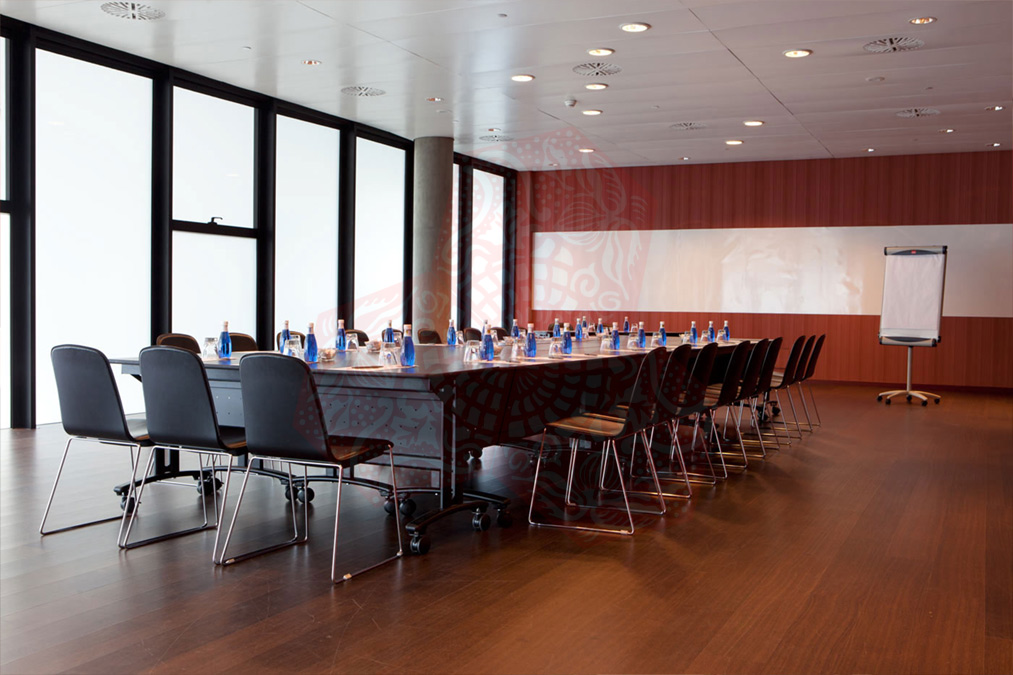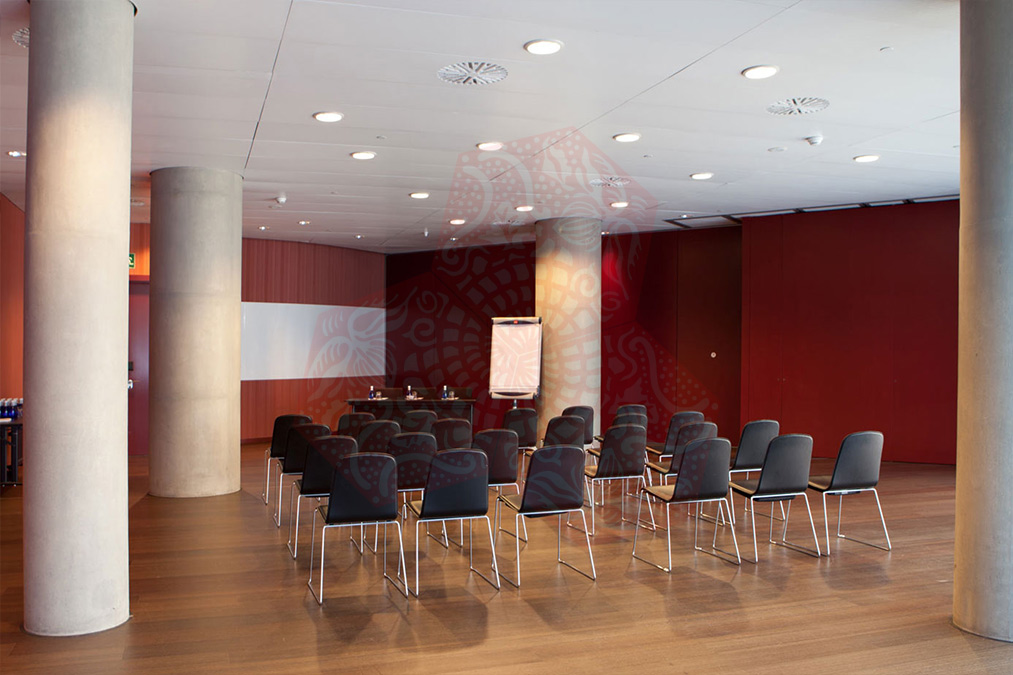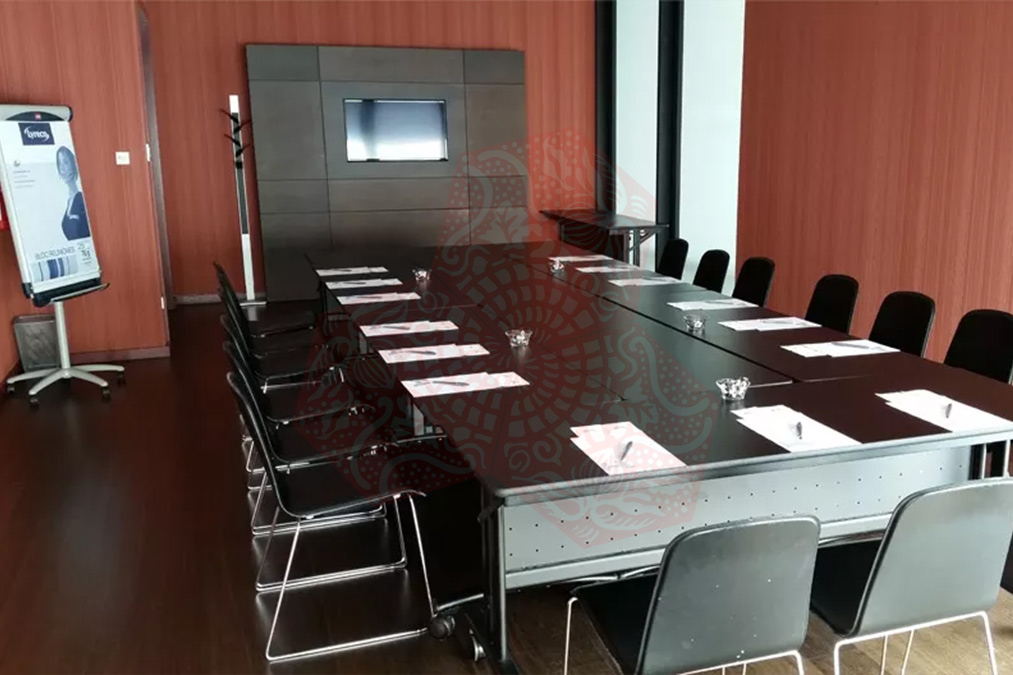BCN HOTEL PORTA FIRA
Situated stone’s throw Fira Barcelona Exhibition Centre, Porta Fira is an impressive red tower designed by Japanese architect Toyo Ito. It offers a gym, sauna and stylish rooms with free Wi-Fi and views over Barcelona. It is also just 1.9 mi (3 km) from Placa d’Espanya. Magic Fountain of Montjuic and Camp Nou are also within 3 mi (5 km).
Hotel Porta Fira’s rooms feature sleek minimalist décor and include a minibar and a flat-screen TV with satellite channels. The modern bathrooms come with a selection of toiletries.
This hotel has its own restaurant serving breakfast, lunch and dinner where you’ll find a selection of items to try. The bar/lounge is a perfect place to have a drink.
Available Room Types:
Standard Double or Twin Room:
Room size: 237 ft²
Bed Size(s): 1 large double bed or 2 single beds
Cancellation / Prepayment
Cancellation and prepayment policies vary according to room type and booking type.
Children and extra beds
All children are welcome.
Free! One child under 2 years stays free of charge in a child's cot/crib.
Free! One child under 2 years stays free of charge when using existing beds.
The maximum number of extra beds in a room is 1.
The maximum number of children's cots/cribs in a room is 1.
Pets
Pets are not allowed.
Accepted credit cards
American Express, Visa, Mastercard, Maestro
Check-in time
15:00
Check-out time
12:00
Facilities
- Air Conditioning
- Airport Shuttle Service
- Catering services
- Convention floor
- Desk
- Free toiletries
- Hairdryer
- Heating
- Hotspots
- Ironing Facilities
- Laundry
- Lounges/bars
- Private Bathroom
- Restaurant
- Room service
- Safety Deposit Box
- Seating area
- TV
- Wake up service
- Wheelchair Accessible
- WiFi
Internet
Free WiFi
Parking
Private parking is possible on site (reservation is needed) and charges are applicable.
L’Hospitalet de Llobregat

L’Hospitalet de Llobregat (in Catalan), or Hospitalet de Llobregat (in Spanish),[a] often shortened to L’Hospitalet, is a municipality to the immediate southwest of Barcelona in Catalonia, Spain.
By population, it is the second largest in Catalonia and the sixteenth in Spain. By population density, is notable for being one of the most densely populated cities in the European Union.
The first records of the settlement date to the Neolithic era with artefacts showing human habitation in the Llobregat river area. Roman artefacts have been found dating to the 2nd century BC such as a funeral decoration representing the head of Medusa now in the archaeological museum of Barcelona. However it is not until the 10th century that written references to Provençana (the city’s original name) appear. The current name originates from the Catalan language and derives from a hostel next to the Church Saint Eulalia of Provençana (Santa Eulàlia de Provençana) used by pilgrims in the Middle Ages. The city retained the character of a village until the 19th century when the first textile factories were built causing a population boom.[citation needed] The 1960s and 1970s saw a second population boom, caused by immigration from poorer regions of Spain: however this was not matched by construction of the necessary amenities and it was only in the 1990s that public investment resulted in additional schools, leisure facilities and housing.
The Swedish painter and former anarchist, later convert to Islam, ‘Abd al-Hādī ‘Aqīlī, formerly known as Ivan Aguéli, died there, being killed by a train, in 1917.
The main reason people would choose to stay in this area is to attend a tradeshow or exhibition at Fira Gran Via, which was located in L’Hospitalet as part of the regeneration of the area.
Read more
We are sorry, there are no reviews yet for this accommodation.

